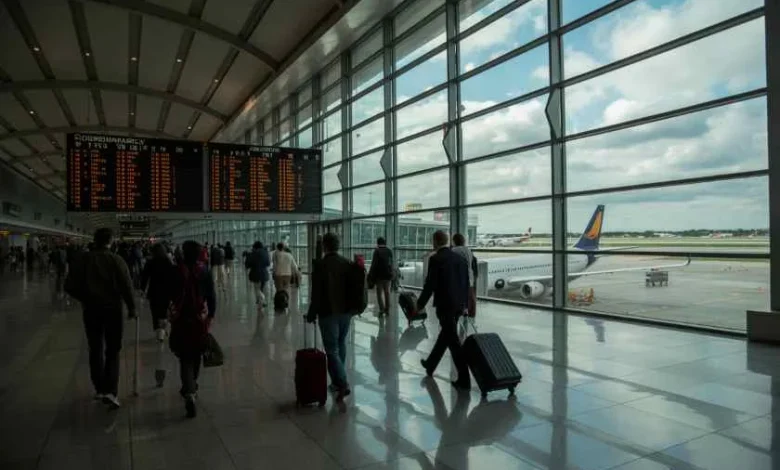Malindi Airport Expansion Set to Boost Kenya’s Coastal Tourism and Connectivity by 2027

Published on
November 4, 2025
In an attempt to reposition Kenya as a leader in maintaining air tourism, the Government has put forth plans to expand Malindi International Airport which, by enhancing air accessibility, will likely augment the coastal tourism industry. Expansion work is scheduled to finish in the year 2027, which is also when the Government hopes to establish Malindi as a premier tourist destination with a bold expansion of the new project.
In Kenya’s Malindi, which boasts an exotic culture, beautiful oceans, and paradisial beaches, has remained relatively tranquil in terms of international tourism due to the lack of international flights. Malindi is usually regarded as a key stopover for international tourists to Enya, competing with major hubs like Mombasa and Nairobi. The expansion plans for the Malindi Airport is meant to enhance accessibility for Malindi to international travelers, positioning it as a key player in the global tourism and trade market.
Continued infrastructural investment, which is aligned with the goals set in Kenya Vision 2030 and the underlying rationale for attracting foreign investments to grow the tourism sector, continues to inform the Government’s decision to expand the airport. The new development is almost certain to have positive multiplier effects on the tourism industry which will, in turn, stimulate the economy of Malindi and the greater Kilifi county.
Key Upgrades to Malindi International Airport
The planned upgrades to Malindi International Airport are extensive and include several critical components to meet growing demand and position the airport as an international gateway. Among the key improvements:
- Extension of Runway 17/35 to 2,500 meters, allowing the airport to accommodate larger, long-haul aircraft.
- Enlargement of the apron area to handle more aircraft, increasing the airport’s operational capacity.
- Construction of a 7.5-kilometer perimeter fence to improve security and safety.
- Development of a new parking facility with the capacity to accommodate 500 vehicles.
- Improved terminal facilities and baggage handling systems to streamline the travel experience for passengers.
These changes will not only improve the airport’s ability to handle larger volumes of passengers and freight but also provide greater access to the Kenya coast, particularly for international visitors. The Kenyan Ministry of Transport has highlighted the importance of modernising infrastructure to meet the evolving needs of the travel and tourism sectors.
Impact on Tourism and Regional Development
The expansion of Malindi Airport is expected to have a significant positive impact on Kenya’s tourism sector. The availability of direct international flights will provide easier access to the region’s world-famous attractions, including the Watamu Marine National Park, Malindi Marine National Park, and the Arabuko Sokoke Forest, which is one of the largest coastal forests in East Africa.
The Kenya Tourism Board has projected that the opening of direct flights will lead to a substantial increase in both international arrivals and tourism-related revenues. With improved accessibility, the area is expected to attract more visitors from Europe, the Middle East, and Asia. Additionally, the convenience of direct flights will encourage greater tourism flows to Kenya’s Indian Ocean Coast, helping to promote local businesses and communities.
Beyond tourism, the expansion of Malindi International Airport will also stimulate regional trade and investment. Direct connectivity with key global markets will allow local businesses to import and export goods more efficiently, which is vital for the economic development of the region. The airport’s upgraded infrastructure will facilitate the movement of goods to and from the Kenya coast, bolstering the economic competitiveness of the area.
The Role of Government and Local Partnerships
The Kenyan government’s collaboration with Kilifi County authorities and key stakeholders in the aviation industry has been central to advancing the Malindi Airport expansion. The successful completion of this project aligns with Kenya’s broader infrastructure goals, as outlined in the Kenya Vision 2030 economic development strategy.
The project has also attracted private-sector support from various stakeholders, with the goal of ensuring that the region benefits from both sustainable development and job creation. Local communities, particularly in Kilifi County, are expected to benefit directly from new employment opportunities in construction, hospitality, aviation services, and other sectors.
Sustainability and Environmental Considerations
Sustainability is a critical aspect of the Malindi Airport expansion. In line with Kenya’s commitment to sustainable development, the project is designed to minimize environmental impact while enhancing the airport’s capabilities. The expansion will incorporate green building practices, such as the use of solar energy, rainwater harvesting, and energy-efficient technologies in terminal facilities.
The Kenya Airports Authority (KAA) is also working closely with environmental experts to ensure that the expansion is carried out with minimal disruption to the surrounding natural environment, especially the coastal ecosystems and marine reserves. The goal is to create a balance between infrastructure development and environmental preservation, in line with Kenya’s national environmental policies and tourism sustainability goals.
The Future of Malindi and Kenya’s Coastal Tourism
The completion of the Malindi Airport expansion is expected to play a pivotal role in the revitalization of the Kenyan coast’s tourism and position Malindi as a premier destination for international travellers. The increased connectivity will open new opportunities for the local tourism industry, including hotels, restaurants, tour operators, and cultural attractions, all of which will benefit from the influx of international visitors.
The development also positions Malindi as a key part of Kenya’s strategy to develop year-round tourism. By improving air access, the region can attract tourists beyond the high seasons, offering a consistent flow of visitors throughout the year. This growth in off-peak tourism will be essential for maintaining the resilience of the tourism sector in the long term.
Conclusion
The expansion of Malindi International Airport marks a new chapter for Kenya’s tourism and aviation industries. By providing direct flights and enhancing airport infrastructure, the project offers a tremendous opportunity for both the local economy and tourism sector. The improvements will not only make it easier for international visitors to access the Kenyan coast but will also foster greater trade and investment in the region. As the project progresses, Malindi will continue to rise as a key destination in East Africa, providing access to both business and leisure travellers seeking to explore Kenya’s natural beauty and vibrant culture.





